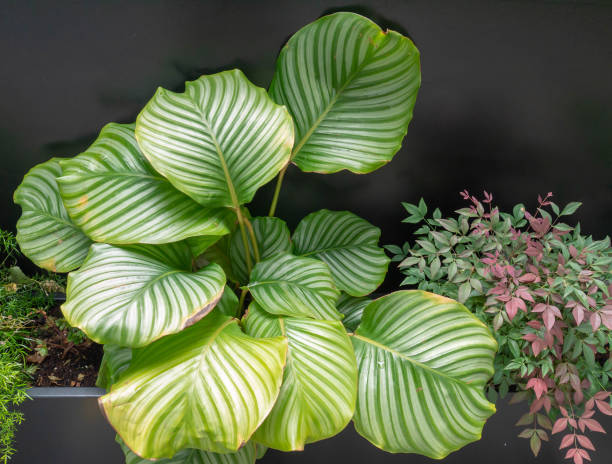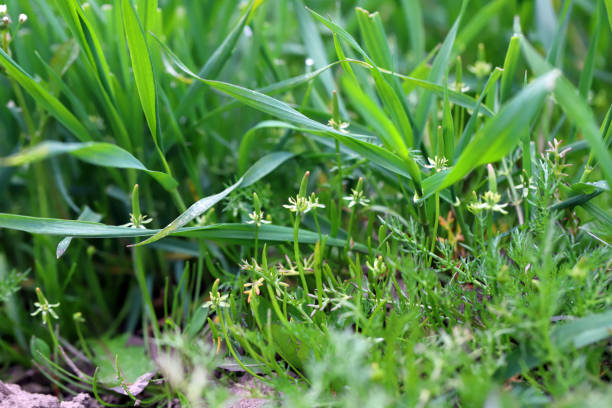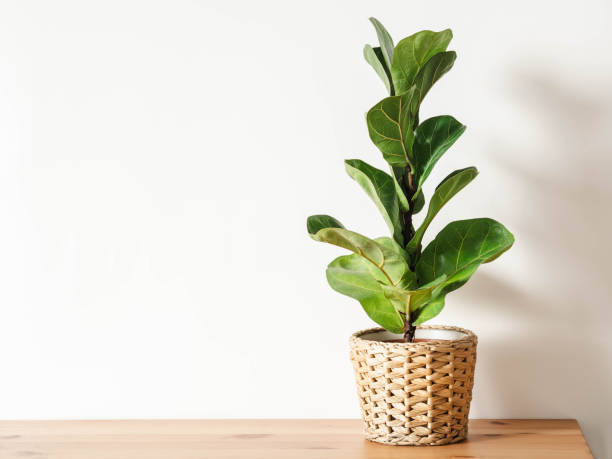Calathea orbifoliais a popular houseplant with large, striped foliage. Although stunning, this plant has some unique care requirements and is therefore best suited to slightly more seasoned indoor plant keepers. This comprehensive Calathea orbifolia care and growing guide are perfect if you’re new to gardening or want to expand your indoor jungle. About Calathea Orbifolia…
read more

Every gardener is aware that weeds frequently appear in unexpected locations. In gutters, on your lawn, and in the spaces between your paving stones… the list is endless. It’s true that keeping weeds at bay is an ongoing challenge that often requires year-round attention. But why exactly are weeds such a big issue? What causes…
read more
Many new ficus owners find it difficult to determine when to repot their fiddle leaf figs. Repotting is a vital part of taking care of the ficus species plant known as the fiddle leaf fig. Repot your fiddle leaf fig at least every two years. Depending on the amount of growth your focus has undergone,…
read more
Grass seed comes from stems of grass that have not been mowed and are allowed to grow tall. In order to allow for pollination, the seed heads, or “inflorescences,” emerge, stick out, and then retract into dormancy. When the seed hardens or reaches maturity, it is ready to be harvested. Continue reading, you will learn…
read more
Ficus Tineke requires soil that drains well and is well-aerated. It thrives in bright indirect or direct sunlight. When the soil is completely dry, only deeply water the plant. 60-95°F (18-35°C) is the ideal range for growing plants. Continue reading, you will learn more care facts about ficus tineke. Ficus Tineke Care Guide There are…
read more
It’s really not that difficult if you want to give bottom water plants a try. If necessary, add some fertilizer to a bowl or saucer of room-temperature water. Simply place the plant in the container at this point and wait around 15 minutes. Continue reading, you will learn more about bottom water plants. What is…
read more
Dormant grass is both cool-season and warm-season grasses that naturally enter a state of dormancy during which they try to conserve water and nutrients. It’s a time to unwind after being under stress, which is typically brought on by cold winter weather or dry summer weather. Continue reading, you will learn more about dormant grass.…
read more
Mayflies that enter the house can be quickly removed by a vacuum with a HEPA filter. Other useful tools for getting rid of mayflies include a broom and a dustpan. For a checkup and assessment, it is advisable to contact pest control experts. They will be in a position to offer guidance on how to…
read more
Even though the majority of earwig species have wings, not all of them are able to fly. When earwigs fly, they typically are not the most agile fliers. As opposed to a house fly, the wings are not as effective. The brief bursts of air that earwigs use to fly are typical. Continue reading, you…
read more
Grass seed can be kept for two to three years if kept in a cool, dry place, but it might not produce the same results as newly sown seed. The proportion of seeds that will be able to germinate decreases as the seed ages, necessitating the use of additional seeds to achieve adequate coverage. Continue…
read moreTag
aerating lawn babay weight baby ear infection vs teething baby grinding teeth baby leaps baby sleeping with mouth open bassinet beauty bleach hair blonde to black hair Bottom Water Plants can sleep apnea kill you Clover Condition Hair do bed bugs fly do dogs get tired of barking dormant grass Earwig earwigs ficus tineke garden grubs Grass Grass Seed hair Hairspray hair transplant before and after hairy baby how long does razor burn last how much is a breast lift how much is an abortion how to sober up from weed inch plant care Lawn mayflies median arcuate ligament syndrome Moisturizer patient care pharmacy Patty Cake pearls rubber tree Seed should i condition my hair everyday sleek bun Studs when is baby too big for bassinet